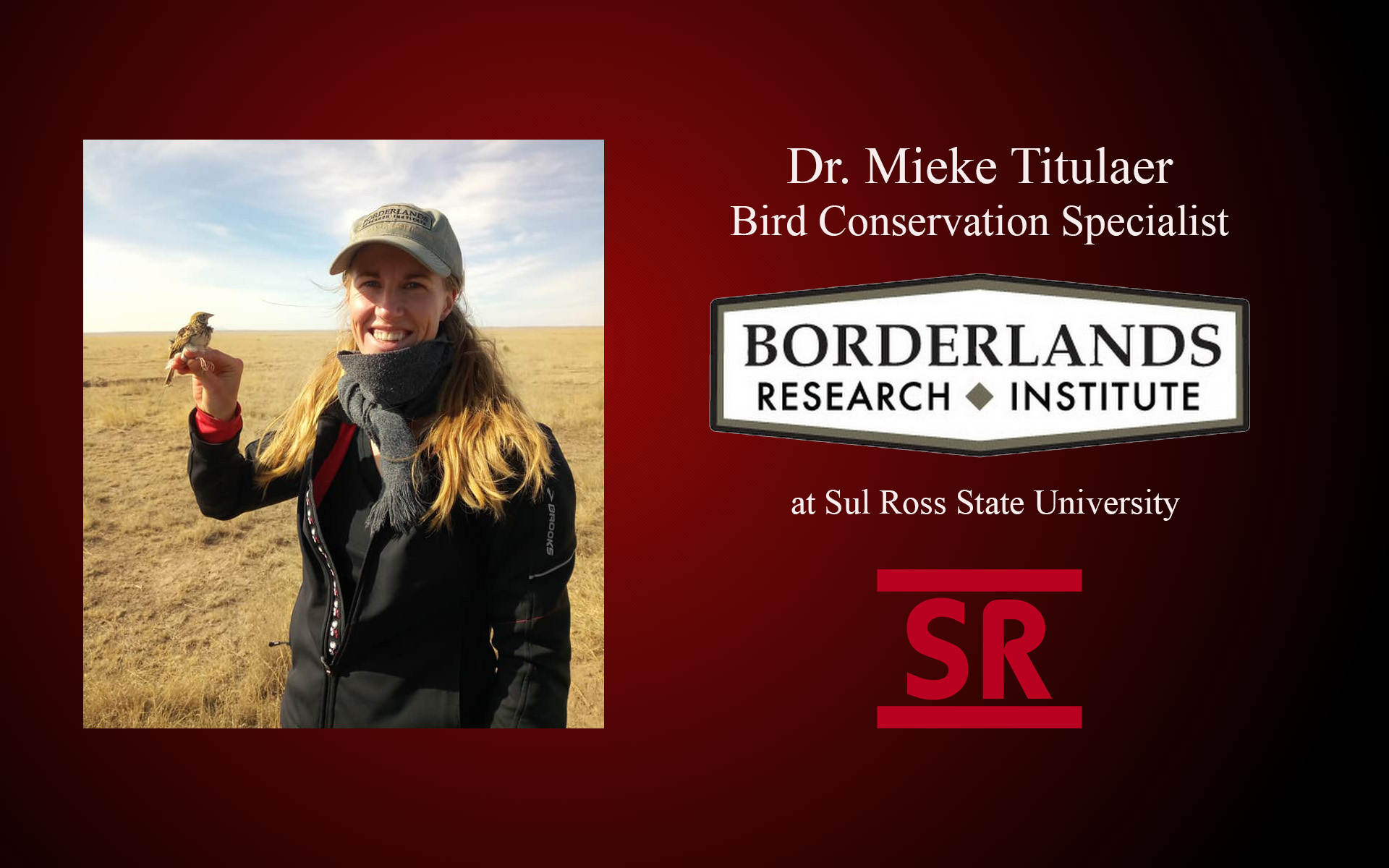
Thanks to the Dixon Water Foundation, the Borderlands Research Institute (BRI) at Sul Ross State University will enhance a songbird conservation program that will connect landowners, birders and the public through community engagement activities. The $25,000 grant will fund field trips focused on birds and implement a citizen science project that will monitor bird populations on private ranches.
“The Dixon Water Foundation is supporting this new effort because birds provide a great indicator of ecological health of the land and waterways of the Chihuahuan Desert,” said Dixon Water Foundation President & CEO Robert J. Potts. “Birds are also an excellent way to engage and educate the public on the importance of well managed watersheds. Birds provide a visible nexus between land, water and people.”
In 2016, BRI launched a comprehensive study evaluating wintering grassland birds on private lands in West Texas. During the first two field seasons, BRI’s Bird Conservation Specialist, Dr. Mieke Titulaer, was successful in involving the birding community across Texas in bird capture activities. Volunteers from all over Texas traveled to Marfa to participate in bird captures.
“More than 230 volunteers helped us gather data over the course of two years, and that enthusiasm confirmed the potential for enhancing our Songbird Conservation Program at BRI,” said Dr. Louis Harveson, who is the Dan Allen Hughes, Jr., BRI Endowed Director and Regents’ Professor of Wildlife Management at Sul Ross State University. “We are immensely grateful to the Dixon Water Foundation for being the wind beneath our wings for this program.”
The goal of the Songbird Conservation Program is to advance the awareness, appreciation, and conservation of birds in West Texas. The grant will allow BRI to implement a number of new initiatives to engage citizens in songbird conservation. Those activities could include bird watching excursions on private ranches, bird photography workshops and educational seminars. In addition, a citizen science project will be developed that will document bird populations on private ranches through long-term monitoring efforts.
“We’re really excited about ramping up this program,” said Dr. Titulaer. “It has been gratifying to interact with so many volunteers who are so enthusiastic about our work. They helped us gather the data we needed for our research, and sparked the idea for a bird outreach program and citizen science project that led to us successfully applying for this grant. We’re looking forward to getting it off the ground.”
With more than 500 birds in the borderlands region of Texas, it is no wonder that West Texas is a favorite destination among birders. Birding is one of the main outdoor recreational activities from which landowners can derive substantial income. A national survey has documented that wildlife watching contributed $1.3 billion to the state’s economy in 2001.
